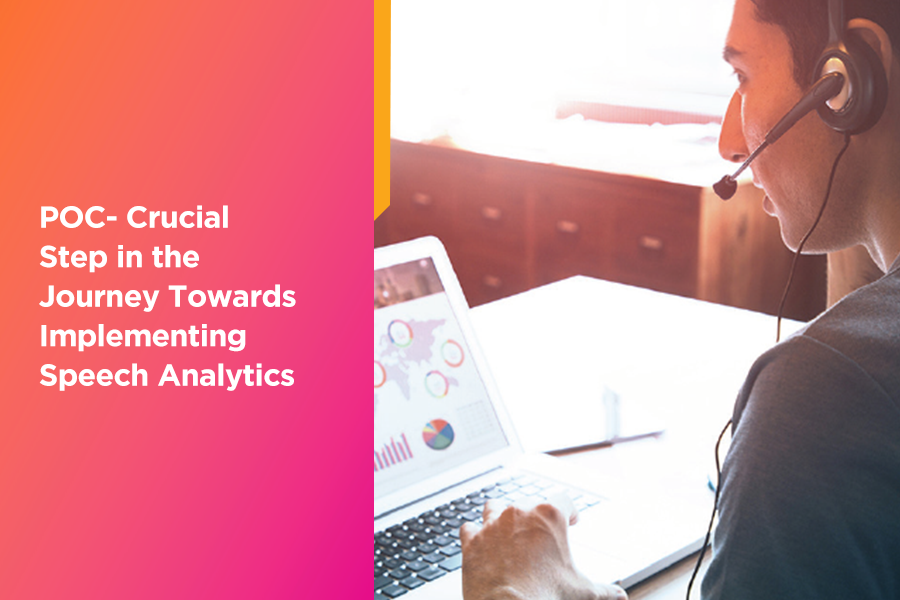The speech Analytics market share has seen exponential growth in recent years – with just 24 implementations in 2004 to a market valuation of $0.81 billion in 2017. It is expected to clock a CAGR of 28.3 percent in the coming decade. From basic providers matching phonetics to new innovative offerings based on data analytics, artificial intelligence, and social media analytics continue to bring enterprise-wide benefits across diverse domains.
Undoubtedly, Speech analytics is sold as an elixir for growth or a magic bullet that can kick-start innovation across the organization. Conservative estimates point out that speech analytics solutions should break even by 6 months and can deliver an ROI of 5X to be considered as a viable business decision.

So, how can companies gear up to maximize the potential of the Speech Analytics platform?
Set Realistic Business Goals
Do not fall for the hype and the sales demonstration. It is important to set the realistic expectations based on internal and market benchmarking to measure the impact of the Speech Analytics solution. Experts suggest compiling 12-month goal reports to operationalize workflows and design processes. This will provide a clear and concise understanding of the organizational needs and how Speech Analytics can help in achieving these goals.
Pick the Right Technology
There are many questions that need to be answered before deploying a Speech Analytics solution for your organization. What does your organization need the most? Do you have the right capabilities to implement, scale, and analyze the insights? Are you able to optimize your workflows to manage Speech Analytics insights?
For instance, organizations need to understand the merits of diverse platforms like speech to text technologies, phonetic driven analytics, and real-time speech processing. Speech-to-text processing uses text mining capabilities and an in-built language model to provide a near-accurate understanding of the entire engagement. It might provide a complete picture for decision-makers compared to phonetic driven analytics that is based on phoneme searches. However, phonetic driven processing can be faster with a lower cost of false positives.
An advanced Speech Analytics solution leaves a huge cost footprint in terms of deployment and maintenance. It is therefore important to find a solution that is scalable and can integrate emerging customer engagement touch points like web, mobile, and apps. Organizations should also link the costs with tangible business outcomes like reduced TCOs, lower customer complaints, improved compliance to justify the technological makeover to stakeholders.
Prepare for Change
An influx of insights, better understanding of the market, tailored reports or total visibility into the customer journey are the big gains with Speech Analytics implementation. But these gains can make an impact on the bottom line only if the stakeholders are consciously working on the finer improvements that are mandated by the system. For example, many agents consider Speech Analytics to be a ‘Big Brother’ that is lying in wait for the potential customer flashpoint. This wilfully sidesteps the learning and improvement opportunities.
Organizations should trigger change management programs and employ change agents to disseminate the perk points of the technology. The sweet spot of analytics accuracy is achieved through diligent audits to pin-point phraseology and create extensive speech libraries. This entails the total focus on continuous improvements, learning and training to get the best out the technology.
Speech Analytics technology like any other brings about disruption within the organization. It is important to pick the right solution that meets the organizational needs, drives continuous improvement goals, and fine tune the system to gain the competitive edge over customer think-share.
